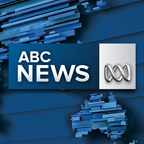
The South Korean army on manoeuvres with US forces in Paju, near the border, and the USS Boxer in the Sea of Japan.

The U.S. Navy’s amphibious assault ship USS Boxer transits the East Sea earlier this month.
North Korean leader Kim Jong-un has ordered further nuclear tests, state media said yesterday, as military tensions surge on the Korean Peninsula with South Korean and US forces engaged in large-scale joint exercises condemned by Pyongyang.
Since the joint drills began on Monday, the North has issued daily warnings and statements, talking up its nuclear strike capabilities and threatening to turn Seoul and Washington into “flames and ashesâ€.
Just days after he was photographed posing in front of what state media described as a miniaturised nuclear warhead, Kim said the weapon required further testing.
Overseeing a ballistic missile launch on Thursday, he Âordered “more nuclear explosion tests to estimate the destructive power of the newly produced Ânuclear warheadsâ€, the North’s official KCNA news agency said.
Experts are divided as to just how far the North may have gone in shrinking warheads to a size capable of fitting on a ballistic missile — a major step forward in strike capability that would present a heightened threat to South Korea, other countries in the Âregion and, eventually, the US mainland.
According to KCNA, Thursday’s launch of two short-range ballistic missiles, which traversed the eastern part of the country Âbefore falling into the Sea of Japan, was part of a nuclear strike exercise.
The aim was to simulate conditions for “exploding nuclear warheads from the preset altitude above targets in the ports under enemy controlâ€, the agency said.
Watching the exercise, Kim reiterated an earlier threat to launch a nuclear Âattack if the “sabre-rattling†South Korea-US drills should harm “even a single tree or a blade of grass†on North Korean territory.
“I will issue a prompt order to launch an attack with all military strike means,†he said.
Military tensions on the Âdivided Korean Peninsula have been on the rise since the North carried out its fourth nuclear test in January, followed by a long-range rocket launch last month.
South Korea and the US responded by scaling up their annual joint drills, which Pyongyang has always condemned as provocative rehearsals for invasion.
The North’s anger has been fuelled this year by reports that the drills included a “decapitation strike†scenario, in which the North Korean leadership and command structure is taken out at the start of any conflict.
In light of such drills, Kim said, “our self-defensive counter-measÂures should adopt a more pre-emptive and offensive mode.â€
The UN Security Council Âresponded to the North’s latest nuclear test and rocket launch by adopting tough new sanctions, which Pyongyang condemned as a “gangster-like†provocation orchesÂtrated by the US.
Reacting to Kim’s call for more nuclear tests, South Korea said yesterday that the North Korean leader was being “rash†and displaying his ignorance of international opinion.
“The international community is imposing strong and comprehensive sanctions and this only goes to prove why they are necessary,†said Unification Ministry spokesman Jeong Joon-hee.
UN Secretary-General Ban Ki-moon earlier voiced grave concern over the growing Âtensions, and urged North Korea to avoid any further “destabilising actsâ€.
Kim, however, chose to highlight the need for a diversified nucleaÂr strike force, capable of delivering warheads from the ground, air, sea and underwater.
The North has conducted a number of what it says were Âsuccessful tests of a submarine-launched ballistic missile.
Outside experts have questioned the results of those tests, suggesting that Pyongyang had gone little further than a “pop-up†test from a submerged platform.
AFP






 Add Category
Add Category